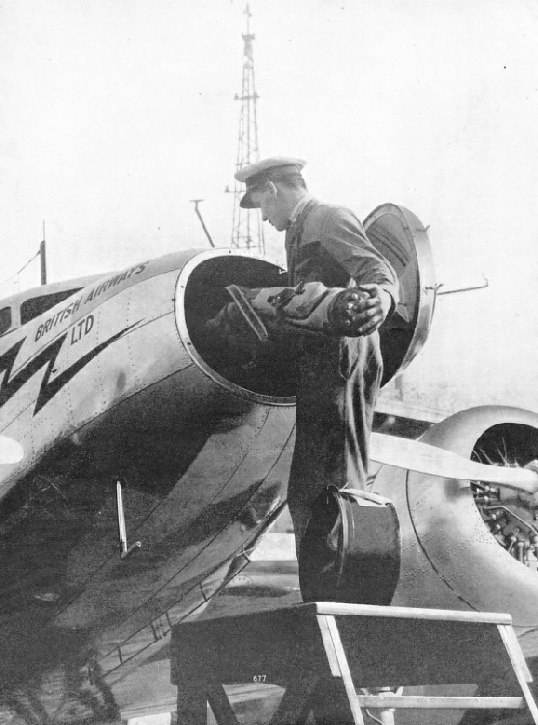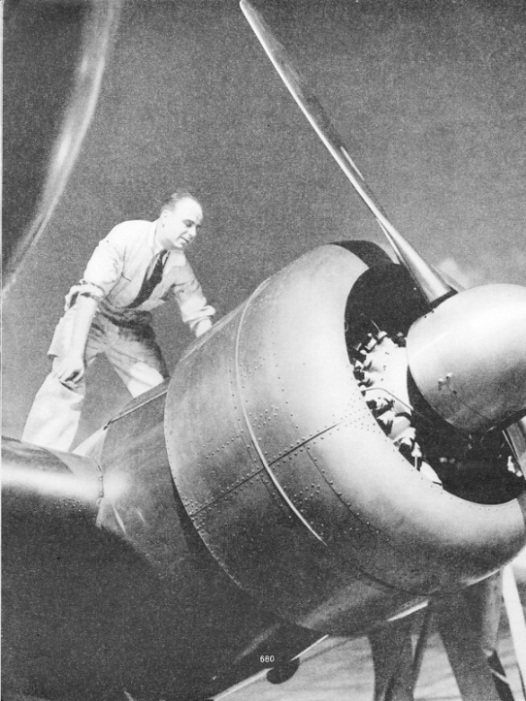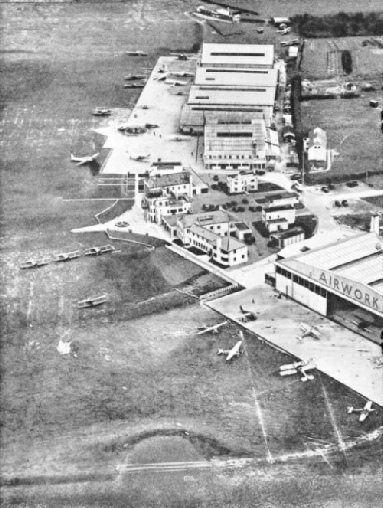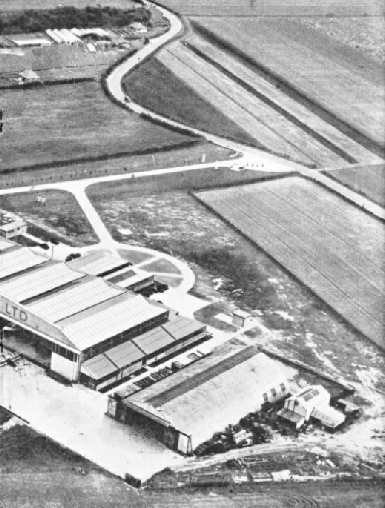
© Wonders of World Aviation 2015-


Part 25
Part 25 of Wonders of World Aviation was published on Tuesday 23rd August 1938, price 7d.
This part included a central photogravure supplement further illustrating the article on British Airways.
The Cover
This week’s cover shows the Frobisher, first of a new class of De Havilland streamlined air liners for use on the London-Paris service. The Frobisher is a low-wing monoplane fitted with four Gipsy Twelve engines and has a cruising speed of 210 miles an hour. There is accommodation for twenty-two passengers.
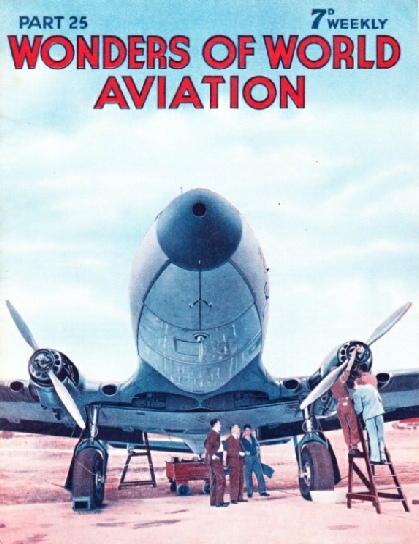
Contents of Part 25
Italian Enterprise (Part 2)
This chapter describes the various records of all kinds that have been made by Italian aviators throughout the history of aviation. The article is concluded from part 24.
How Aircraft are Designed
The popular conception of an aeroplane designer is that he is a solitary worker, to whom there comes in an intuitive flash an idea which he embodies in a revolutionary invention. In these days no aeroplane is ever designed by one man single-handed. Every firm of constructors has a Chief Designer, but her is only the head of a large staff of designers. This chapter describes the many months of work by numerous specialists that are required to complete a new design.
Sounding the Skyways
The performance of an aeroplane is considerably affected by the temperature, humidity and density of the air through which it flies. This chapter describes how meteorologists use balloons to carry recording instruments several miles up into the atmosphere.
British Airways
British Airways was formed by the amalgamation on October 1, 1935, of Hillman’s Airways, United Airways and Spartan Airlines. In August 1936 British Continental Airways was absorbed. British Airways is the only British company which operates regular night mail services. British Airways was the first British company to establish a blind-approach training school for its pilots and the first British company to use the Link trainer for the training of commercial pilots. This chapter describes this great aircraft operating company.
This is the fourteenth article in the series Air Routes of the World.
British Airways
Photogravure Supplement
BAGGAGE IS CARRIED IN THE NOSE of the Lockheed Electra. This compartment is over 30 cubic feet in capacity; some baggage can be carried in compartments in the wings. Controllable-pitch propellers are fitted, and the pitch of thee is partly altered automatically according to the throttle opening. On one engine the aircraft is able to climb to 5,800 feet with full load.
British Airways
Photogravure Supplement - 3
A THOROUGH INSPECTION of the airframe, engines, instruments, and controls is carried out on completion of each day’s flying, and every item is carefully examined in readiness for the next day’s work. Only after everything had been thoroughly checked is the daily flight certificate signed by the Inspector; without this certificate the machine cannot be flown on service again.
British Airways Photogravure Supplement - 2
THE HOME OF BRITISH AIRWAYS is at Heston Airport, Middlesex, an aerial view of the buildings of which is shown in this photograph. The operational staff, service department workshops and the instructional school are all housed at this aerodrome. The large hangar in the foreground now belongs to British Airways and houses the company’s fleet of aircraft. It has a floor area of 60,000 square feet and an unobstructed entrance 200 feet wide.
Bristol Pegasus and Mercury
The development of the air-cooled radial engine in Great Britain is closely linked with the name of Bristol. In engine design the Bristol Aeroplane Company, Ltd, had concentrated exclusively on this type since 1920. The current series of nine-cylinder, single-bank radial engines made by the firm is a fitting testimony to the progress that has been made. This chapter describes the Bristol Pegasus and Mercury engines.
This is the third article in the series on Modern Aero Engines.
Training Machines
The training aeroplanes of the war of 1914-18 may be divided into two classes. First, there were training aeroplanes that were used in vast numbers for instructional flying, but scarcely at all for any other purpose. Secondly, there were the advanced training types which were almost always those in use on active service at the particular period of the war. This chapter describes the service types used for advanced instruction and the separate aeroplanes used for elementary tuition.
This is the third article in the series on Aeroplanes of the Great War.
Some Famous Air Trophies (Part 1)
If the day of the spectacular air races and contests is over, there are still many valuable trophies to be won by the modern flying man. This chapter tells the stories of some famous air trophies. The article is concluded in part 26.
